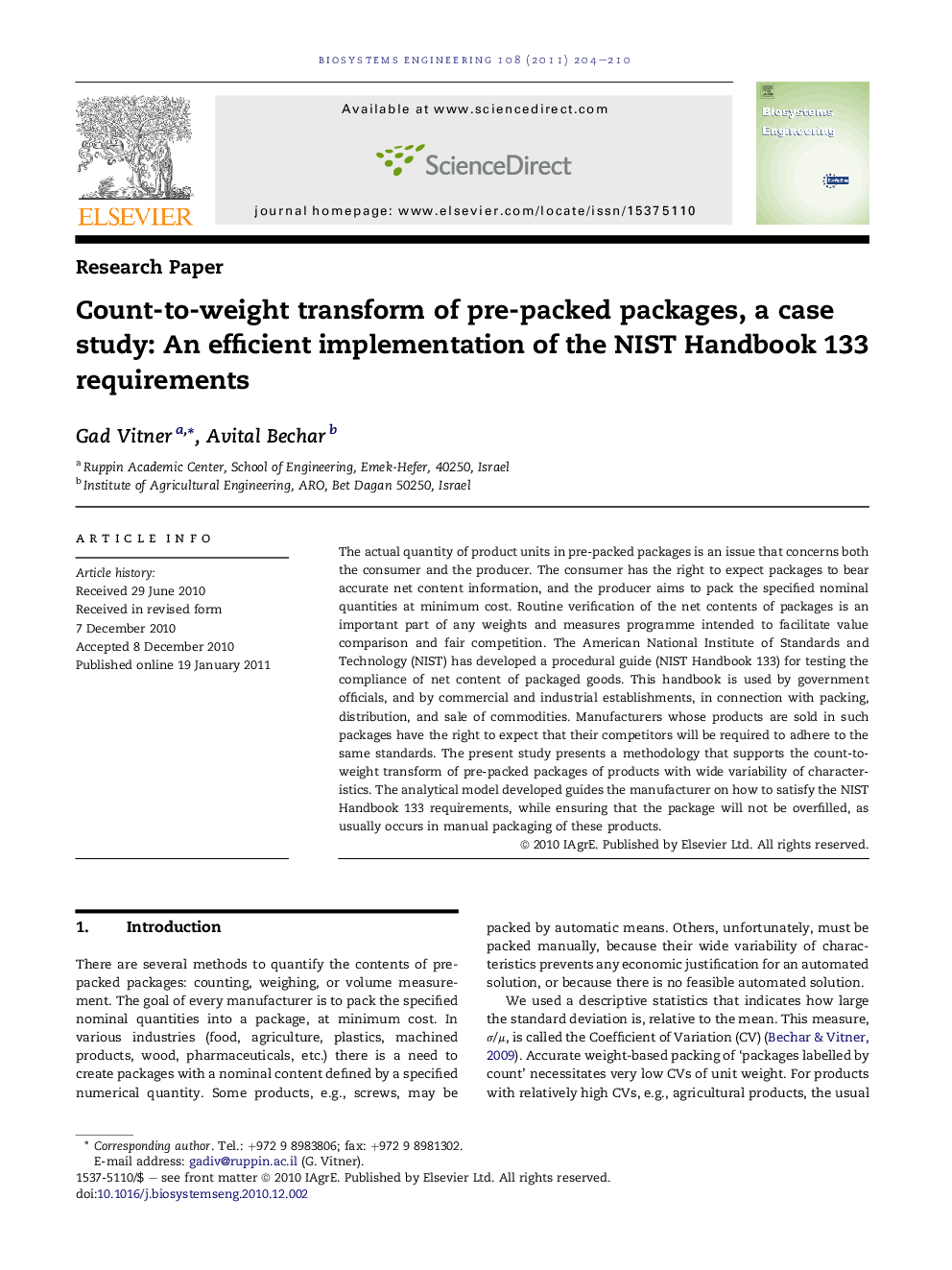| Article ID | Journal | Published Year | Pages | File Type |
|---|---|---|---|---|
| 1711698 | Biosystems Engineering | 2011 | 7 Pages |
The actual quantity of product units in pre-packed packages is an issue that concerns both the consumer and the producer. The consumer has the right to expect packages to bear accurate net content information, and the producer aims to pack the specified nominal quantities at minimum cost. Routine verification of the net contents of packages is an important part of any weights and measures programme intended to facilitate value comparison and fair competition. The American National Institute of Standards and Technology (NIST) has developed a procedural guide (NIST Handbook 133) for testing the compliance of net content of packaged goods. This handbook is used by government officials, and by commercial and industrial establishments, in connection with packing, distribution, and sale of commodities. Manufacturers whose products are sold in such packages have the right to expect that their competitors will be required to adhere to the same standards. The present study presents a methodology that supports the count-to-weight transform of pre-packed packages of products with wide variability of characteristics. The analytical model developed guides the manufacturer on how to satisfy the NIST Handbook 133 requirements, while ensuring that the package will not be overfilled, as usually occurs in manual packaging of these products.
Research highlights► Methodology to allow use of weighing in the packing process of pre-packed packages. ► Builds on NIST Handbook 133 guide for compliance of net content of packaged goods. ► Packing strategy supports manufacturer to fulfil market/customer demand. ► Accurate weight-based packing by count saves time and eliminates over/under filling.
